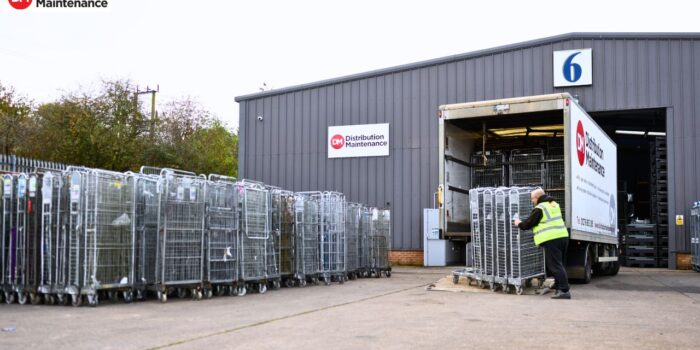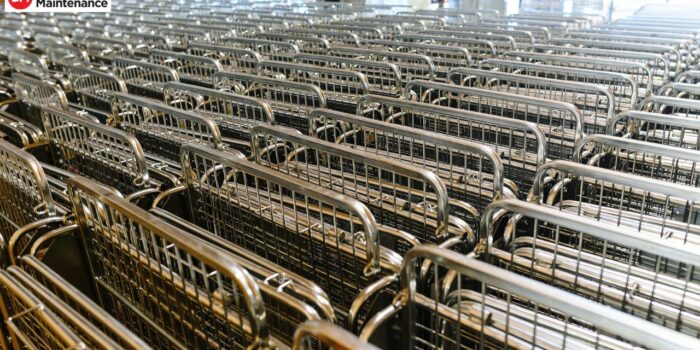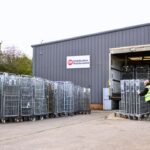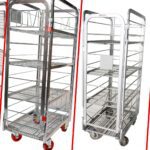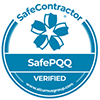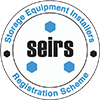Maximise Efficiency: The Ultimate Guide to Choosing the Right Cage Trolley for Your Business
In today’s fast-paced business environment, maximising efficiency is more critical than ever. One often overlooked component that can significantly enhance your operational workflow is the cage trolley. These versatile tools are not just about transporting goods; they embody a strategic investment in productivity and organisation. Choosing the right cage trolley can streamline your processes, reduce downtime, and ensure that your workforce operates at peak performance.
With a myriad of options available, from materials to designs and capacities, selecting the perfect cage trolley can be daunting. This ultimate guide will demystify the selection process, equipping you with the knowledge to make informed decisions that align with your business needs. Whether you’re in retail, warehousing, or manufacturing, understanding the essential features of cage trolleys will empower you to transform how your business operates. Dive in as we explore the factors to consider and how to select the ideal cage trolley to propel your efficiency to new heights.
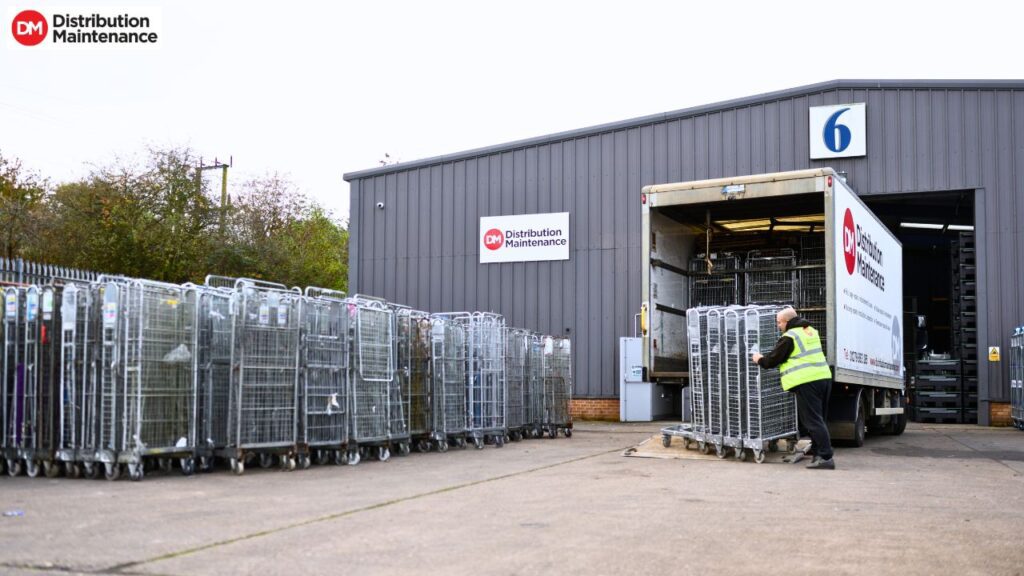
Understanding the Importance of Cage Trolleys in Business Operations
Maximising operational efficiency is a goal that every business strives to achieve. Whether you are in retail, warehousing, or manufacturing, the ability to move goods swiftly and safely is paramount. This is where cage trolleys come into play. Cage trolleys, also known as roll containers or roll cages, are indispensable tools designed to facilitate the transportation of goods within a business setting. They are engineered to streamline the movement of products, materials, or equipment, thereby enhancing productivity and reducing manual handling efforts.
The importance of cage trolleys extends beyond mere transportation. They play a critical role in maintaining an organised and efficient workflow. By using cage trolleys, businesses can ensure that goods are not only moved quickly but also stored securely and systematically. This reduces the chances of damage, loss, or misplacement of items, all of which can lead to operational delays and increased costs. Moreover, the use of cage trolleys helps to optimise space utilisation within a facility, as they can be easily manoeuvred and stored when not in use.
Furthermore, cage trolleys contribute significantly to workplace safety. Manual handling of heavy or bulky items can result in injuries, which can have severe implications for both the affected employees and the business. Cage trolleys are designed to minimise the physical strain on workers by providing a means to transport loads with minimal effort. This not only enhances the efficiency of operations but also promotes a safer working environment. In essence, investing in the right cage trolley is a strategic decision that can yield substantial benefits in terms of productivity, organisation, and safety.
Key Features to Look for in a Cage Trolley
When selecting a roll cage for your business, it is crucial to consider several key features that can impact its functionality and suitability for your specific needs. One of the primary features to look for is the trolley’s load capacity. Different trolleys are designed to handle varying weights, so it is essential to choose one that can accommodate the typical loads you will be transporting. Overloading a trolley can lead to mechanical failure and pose safety risks, so always ensure that the load capacity aligns with your requirements.
Another important feature to consider is the design of the wheels. The type of wheels on a cage trolley can significantly affect its manoeuvrability and ease of use. For instance, swivel wheels allow for greater flexibility in tight spaces, while fixed wheels provide stability and control over longer distances. Additionally, the material of the wheels is also important; rubber wheels offer better traction and shock absorption, making them suitable for uneven surfaces, whereas polyurethane wheels are more durable and resistant to wear.
Security features are also vital when choosing a cage trolley. Many trolleys come with lockable doors or lids to prevent unauthorised access and ensure that the contents remain secure during transport. This is particularly important for businesses that handle valuable or sensitive items. Moreover, look for trolleys with reinforced frames and sturdy construction to withstand the rigours of daily use. Other features to consider include foldability for easy storage, ergonomic handles for comfortable operation, and modular designs that allow for customisation based on your specific needs.
Different Types of Cage Trolleys and Their Uses
Cage trolleys come in various types, each designed to cater to different operational requirements. Understanding these different types and their specific uses can help you make an informed decision about which trolley is best suited for your business. One common type is the standard cage trolley, which typically features a robust frame with mesh sides and a base. These trolleys are versatile and can be used in a wide range of applications, from transporting goods in a warehouse to stocking shelves in a retail store.
Another type is the nesting cage trolley, which is designed for space efficiency. These trolleys can be nested within each other when not in use, making them ideal for businesses that require multiple trolleys but have limited storage space. Nesting trolleys are often used in retail environments, where they can be easily stacked and stored out of the way when not needed. Additionally, some nesting trolleys come with detachable shelves or compartments, offering flexibility in how they can be used.
For businesses that handle large or bulky items, jumbo cage trolleys are an excellent option. These trolleys are larger in size and have higher load capacities, making them suitable for transporting heavy or oversized goods. They are commonly used in industrial settings, such as manufacturing plants or distribution centers, where the movement of large volumes of materials is a regular occurrence. Other specialised types of cage trolleys include laundry trolleys, which are designed for the transport of linens and garments, and security trolleys, which feature reinforced doors and locks for the secure transport of valuable items.
Assessing Your Business Needs for Cage Trolleys
To choose the right cage trolley for your business, it is essential to conduct a thorough assessment of your specific needs and operational requirements. Start by evaluating the types of goods you will be transporting. Consider factors such as the weight, size, and fragility of the items, as these will influence the load capacity, design, and features of the trolley you need. For example, if you handle fragile items, you may require trolleys with padded interiors or shock-absorbing wheels to prevent damage during transport.
Next, assess the environment in which the trolleys will be used. The layout and conditions of your facility can impact the type of trolley that will be most effective. For instance, if your business operates in a space with narrow aisles or tight corners, you may need trolleys with swivel wheels for better maneuverability. If the floors are uneven or have obstacles, trolleys with larger, more durable wheels may be necessary to ensure smooth operation. Additionally, consider whether the trolleys will be used indoors, outdoors, or in both settings, as this can affect the choice of materials and features.
It is also important to consider the frequency and intensity of use. If the trolleys will be used frequently and for heavy loads, investing in high-quality, durable models is essential to ensure longevity and reliability. On the other hand, if the trolleys will be used less frequently or for lighter loads, more economical options may suffice. Furthermore, think about any specific requirements such as security features for valuable items, foldability for storage, or modular designs for versatility. By thoroughly assessing your business needs, you can select cage trolleys that are perfectly aligned with your operational demands.
Material Considerations: Metal vs. Plastic Cage Trolleys
When selecting cage trolleys, one of the key decisions you will need to make is the choice of material. The two most common materials used for cage trolleys are metal and plastic, each with its own set of advantages and considerations. Metal cage trolleys, typically made from steel or aluminium, are known for their strength and durability. They are capable of handling heavy loads and can withstand the wear and tear of daily use in demanding environments. Steel trolleys, in particular, offer excellent resistance to impact and are less likely to bend or break under pressure.
However, metal trolleys can be heavier and more challenging to manoeuvre, especially when fully loaded. They may also be susceptible to rust and corrosion if used in wet or humid conditions, although this can be mitigated with proper maintenance and protective coatings. On the other hand, plastic cage trolleys are lighter and easier to handle, making them ideal for environments where ease of movement is a priority. They are also resistant to rust and corrosion, making them suitable for use in areas with high moisture levels or where hygiene is critical, such as in food handling or healthcare settings.
While plastic trolleys may not have the same load capacity as their metal counterparts, advances in plastic manufacturing have led to the development of high-strength plastics that can support substantial weights. Additionally, plastic trolleys often feature smooth, non-porous surfaces that are easy to clean and sanitise, further enhancing their suitability for hygiene-sensitive applications. Ultimately, the choice between metal and plastic cage trolleys will depend on your specific operational needs, the environment in which they will be used, and the balance between durability, weight, and ease of maintenance.
Size and Capacity: Finding the Right Fit for Your Operations
Choosing the right size and capacity for your cage trolleys is crucial to ensuring they meet your operational needs effectively. The size of the trolley should be appropriate for the types of goods you will be transporting and the dimensions of your facility. Consider the width, height, and depth of the trolleys in relation to the items you typically handle. For example, if you transport large boxes or equipment, you will need trolleys with sufficient dimensions to accommodate these items without overloading or causing instability.
Capacity, both in terms of volume and weight, is another critical factor. The weight capacity of a trolley indicates the maximum load it can safely carry. It is important to choose trolleys with a load capacity that matches or exceeds the weight of the goods you will be transporting to prevent mechanical failure and ensure safe operation. Additionally, consider the volume capacity, which refers to the amount of space available for the items. If you frequently transport large quantities of goods, trolleys with higher volume capacities will be more efficient, reducing the number of trips required.
The layout of your facility also plays a role in determining the right size and capacity for your trolleys. In environments with narrow aisles or tight spaces, smaller, more manoeuvrable trolleys may be necessary to navigate efficiently. Conversely, larger, open spaces may accommodate bigger trolleys with higher capacities, allowing for the transport of more goods in a single trip. It is essential to strike a balance between size, capacity, and manoeuvrability to ensure that your cage trolleys enhance, rather than hinder, your operational workflow.
Safety Features and Compliance Standards
Safety should be a top priority when selecting cage trolleys for your business. Ensuring that the trolleys you choose have the necessary safety features can help prevent accidents and injuries, protecting both your employees and your goods. One important safety feature to look for is the braking system. Trolleys with reliable brakes can be securely stopped and held in place, preventing unwanted movement during loading and unloading. This is particularly important in environments with inclines or uneven surfaces where trolleys could otherwise roll away.
Ergonomic design is another key safety consideration. Trolleys with comfortable, easy-to-grip handles reduce the strain on workers’ hands and wrists, making them easier to push and pull. Additionally, trolleys with adjustable handles or heights can be tailored to the needs of different users, promoting better posture and reducing the risk of musculoskeletal injuries. It is also beneficial to choose trolleys with smooth, rounded edges to minimise the risk of cuts or abrasions during handling.
Compliance with industry standards and regulations is essential for ensuring the safety and reliability of your cage trolleys. Look for trolleys that meet relevant safety standards, such as those set by the Occupational Safety and Health Administration (OSHA) or the European Union’s Machinery Directive. These standards provide guidelines for the design, construction, and use of trolleys to ensure they are safe and fit for purpose. Additionally, consider any specific regulatory requirements that may apply to your industry, such as hygiene standards for food handling or anti-static properties for electronics manufacturing. By prioritising safety features and compliance, you can ensure that your cage trolleys contribute to a safe and efficient working environment.
Maintenance Tips for Longevity and Efficiency
To maximise the longevity and efficiency of your cage trolleys, regular maintenance is essential. Proper care and maintenance not only ensure that your trolleys remain in good working condition but also help to prevent unexpected breakdowns and costly repairs. One of the most important maintenance tasks is regular cleaning. Keep your trolleys clean by wiping them down with a damp cloth and mild detergent to remove dirt, dust, and debris. For metal trolleys, be sure to dry them thoroughly to prevent rust and corrosion.
Inspect your trolleys regularly for signs of wear and damage. Check the wheels for any signs of wear, such as flat spots or cracks, and replace them if necessary. Lubricate the wheel bearings periodically to ensure smooth and easy movement. Inspect the frame and joints for any signs of damage, such as bends, cracks, or loose connections, and repair or replace any damaged components promptly. For trolleys with folding or collapsible parts, ensure that the locking mechanisms are functioning correctly and that the parts move smoothly without sticking.
Proper storage is also important for maintaining the condition of your trolleys. Store your trolleys in a dry, clean area away from moisture and corrosive substances. If your trolleys are stackable or nestable, take care to stack or nest them correctly to avoid damage. Additionally, provide training for your employees on the proper use and handling of the trolleys to prevent misuse and ensure that they are used safely and effectively. By following these maintenance tips, you can extend the lifespan of your cage trolleys and ensure that they continue to operate efficiently.
Cost-Benefit Analysis: Investing in Quality Cage Trolleys
Investing in quality cage trolleys can have significant long-term benefits for your business. While high-quality trolleys may come with a higher initial cost, they often provide better value in the long run due to their durability, reliability, and performance. Conducting a cost-benefit analysis can help you determine the true value of investing in quality trolleys and make informed decisions about your purchases. Start by considering the total cost of ownership, which includes the initial purchase price, maintenance costs, and the expected lifespan of the trolleys.
High-quality trolleys are typically made from durable materials and are designed to withstand the rigors of daily use. This means they are less likely to break down or require frequent repairs, reducing maintenance costs and downtime. Additionally, quality trolleys often come with better safety features and ergonomic designs, which can enhance productivity and reduce the risk of workplace injuries. By investing in reliable trolleys, you can ensure that your operations run smoothly and efficiently, ultimately saving your business time and money.
Consider the potential productivity gains that can be achieved with high-quality trolleys. Efficient and reliable trolleys can streamline the movement of goods, reduce manual handling efforts, and minimize the time required for loading and unloading. This can lead to faster turnaround times, increased throughput, and improved overall efficiency. Additionally, quality trolleys can enhance employee satisfaction by providing safe and easy-to-use tools that reduce physical strain and fatigue. By conducting a thorough cost-benefit analysis, you can make a strategic investment in cage trolleys that will deliver substantial returns for your business.
Conclusion: Making an Informed Decision for Your Business
Choosing the right cage trolley for your business is a critical decision that can significantly impact your operational efficiency, organisation, and safety. By understanding the importance of cage trolleys and considering key features such as load capacity, wheel design, and security features, you can select trolleys that meet your specific needs. Additionally, assessing your business requirements, evaluating material options, and considering size and capacity will help you find the right fit for your operations.
Prioritising safety features and ensuring compliance with industry standards are essential for maintaining a safe working environment. Regular maintenance and proper care will extend the lifespan of your trolleys and ensure they continue to operate efficiently. Finally, conducting a cost-benefit analysis will help you make informed decisions about investing in quality trolleys that provide long-term value and enhance productivity.
By following the guidance provided in this ultimate guide, you can make well-informed decisions that align with your business needs and transform how your operations run. Whether you are in retail, warehousing, or manufacturing, the right cage trolley can propel your efficiency to new heights, ensuring that your workforce operates at peak performance and your business thrives in today’s competitive environment.

